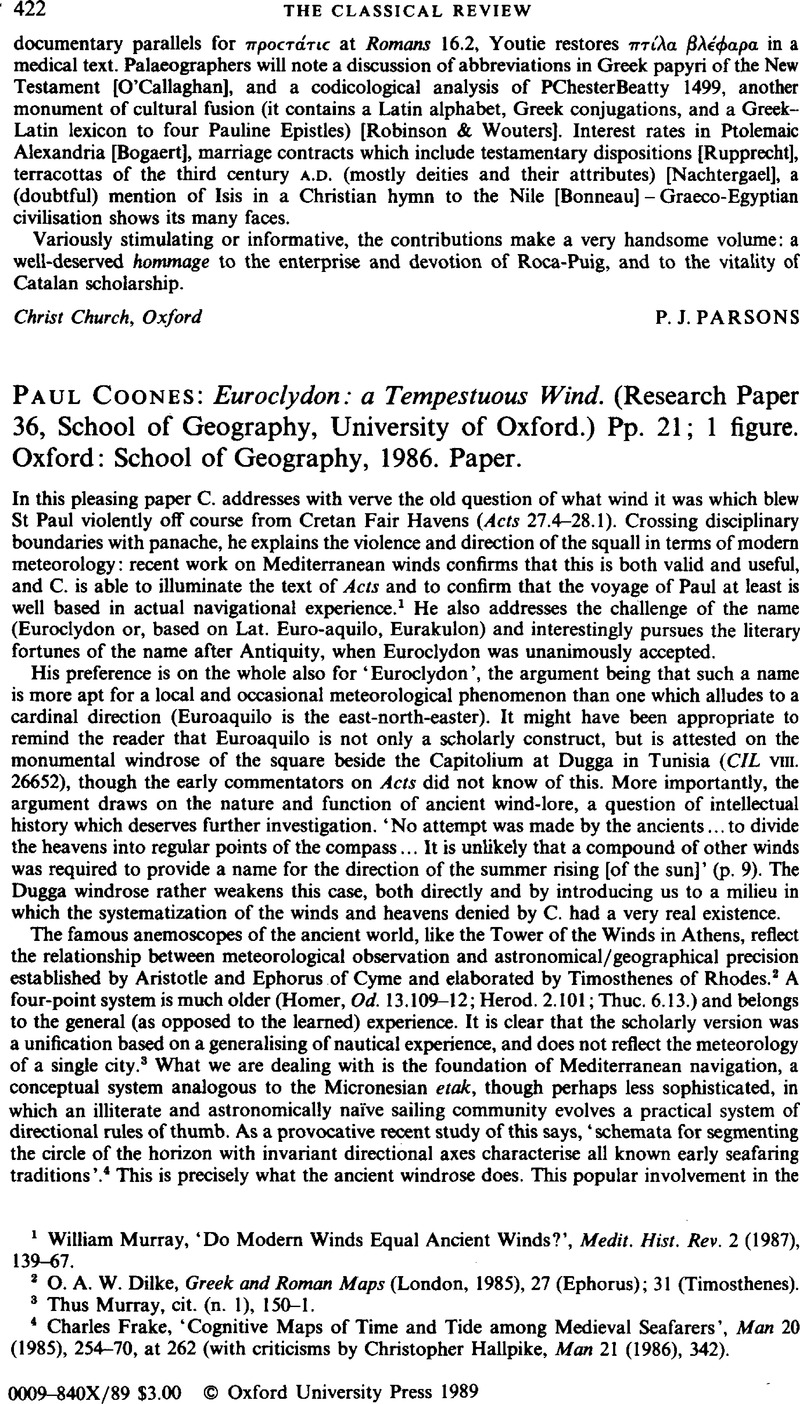No CrossRef data available.
Article contents
Paul Coones: Euroclydon: a Tempestuous Wind. (Research Paper 36, School of Geography, University of Oxford.) Pp. 21; 1 figure. Oxford: School of Geography, 1986. Paper.
Published online by Cambridge University Press: 16 February 2009
Abstract

- Type
- Notices
- Information
- Copyright
- Copyright © The Classical Association 1989
References
1 Murray, William, ‘Do Modern Winds Equal Ancient Winds?’, Medit. Hist. Rev. 2 (1987), 139–167.Google Scholar
2 Dilke, O. A. W., Greek and Roman Maps (London, 1985), 27 (Ephorus); 31 (Timosthenes).Google Scholar
3 Thus Murray, cit. (n. 1), 150–1.
4 Frake, Charles, ‘Cognitive Maps of Time and Tide among Medieval Seafarers’, Man 20 (1985), 254–270, at 262CrossRefGoogle Scholar (with criticisms by Hallpike, Christopher, Man 21 (1986), 342Google Scholar).
5 Pollak, Lodovico, ‘L'anemoscopio dell' Arco di S. Lazzaro’, Boll. Com. 61 (1933), 131–137, at 134Google Scholar. The piece is probably of the fifth century A.D., but was stolen the night after it was found.


